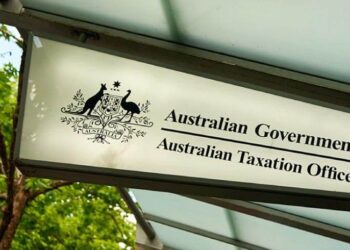In the budget last year, the government announced a measure to allow individuals to exit a specified range of legacy retirement products, together with any associated reserves for a two-year period. The measure will have effect from the first financial year after the date of royal assent of the enabling legislation.
It includes market-linked, life expectancy and lifetime products but not flexi-pension products or a lifetime product in a large APRA-regulated or public sector defined benefit scheme.
However, actuarial certificate provider Accurium has warned that the strategy for SMSFs with these types of pensions is not a simple as waiting for the start of the two-year exit period.
“Given the fact that the life expectancy tables are not that kind for such members, putting aside these SMSF members until the start of two year exit measure to deal with those pensions may turn out to be quite costly,” Accurium warned in an online article.
Accurium reminded SMSF professionals that one of the issues with these pensions is that they cannot be commuted, except in limited circumstances.
“Also, an SMSF member cannot affect a transfer of the pension capital back to their accumulation account, unlike an account based pension,” the firm stated.
Since 1 July 2007, the bigger issue is dealing with any leftover pension capital after the pension has expired, either as a consequence of the pension term ceasing or the member dying, Accurium explained.
The contribution caps that applied from 1 July 2007 present a challenge for dealing with these leftover reserves.
“Further, there can be little to no estate planning strategies that can be implemented for these types of pensions as generally, any residual capital does not belong to the deceased member,” it said.
Accurium warned that SMSF members and their advisers need to be aware of the adverse estate planning and tax consequences that can arise upon the death of a member with a defined benefit pension the importance of considering options before their death.
“Generally, when a member is receiving a (non-reversionary) lifetime complying pension, then upon their death, the capital supporting the pension will remain in an unallocated reserve and cannot be paid to the deceased member’s dependants or their estate,” the SMSF services provider cautioned.
“This unallocated reserve belongs to the SMSF and is controlled by the trustee. The trustee of the fund could allocate money from the reserve to the other members in the fund but it is important to take note of the taxation treatment of those distributions as outlined in regulation 291-25.01 Income Tax Assessment (1997 Act) Regulations 2021.”
If the member is receiving a complying life-expectancy (fixed-term) pension, then on the death of the primary beneficiary where the term of the pension was not based on the spouse, the remaining pension payments until the end of the term of the pension or a lump sum equivalent of the remaining pension payments can be paid to the estate, Accurium said.
“However, if the term of the pension was set based on the spouse’s life expectancy, the pension must continue to the spouse. The commutation value of a life-expectancy pension into a lump sum is also restricted by regulation 1.08 of the SIS Regulations. This provision imposes a limit on the maximum amount that can be commuted to a lump sum,” it explained.
“If the capital supporting the life-expectancy pension exceeds the amount that can be commuted to a lump sum, then the surplus capital will remain in an unallocated reserve.”
Given the low concessional contribution cap, Accurium warned that allocating a large amount leftover from an expired defined benefit pension could take a number of years, particularly where the objective is to avoid any excess concessional contributions and associated potential tax implications.
“This can be a disappointing revelation to surviving family members who may have been anticipating receiving a significant amount of capital as a superannuation death benefit payment, either directly from the SMSF or via the deceased member’s estate,” Accurium said.
To remove the risk of potential estate and tax consequences where the member with a DB pension dies prior to being able to exit it under the two-year budget measure, Accurium said consideration should be given to restructuring the DB pension to a pension for which any capital remaining upon the member’s death can be dealt with, similar to a market-linked or account-based pension, that is, paid to a dependent or estate.
“Where the relevant member wishes to retain capital inside the SMSF, which could be due to the type of assets held by the SMSF, a restructure to a market linked pension will be the only option,” Accurium noted.
The main advantage of converting a lifetime complying pension to a market-linked pension is that upon death, the value of the market-linked pension can be paid out of the SMSF as a superannuation death benefit, no amount will be caught in an unallocated reserve, Accurium explained.
A similar approach could be applied where a member has a life expectancy pension; however, as noted, the commutation restriction rules that apply to this type of pension are likely to result in a portion of the DB pension capital not being converted to the MLP and being held in an unallocated reserve, it said.
Accurium noted that there would also be Centrelink considerations for any conversion of an asset test exempt pension, both under the current rules and any future two-year exit measure.
Based on its understanding, Accurium said the conversion of a lifetime complying pension to a market-linked pension would not remove their opportunity to use the exit measure.
“However, it does remove the issue of dealing with an unallocated reserve in the situation where she dies prior to being able to use the exit measure,” Accurium explained.
“Further, depending on the draft legislation, the conversion from the LCP to the MLP is likely to have removed the assessable ‘commuted reserve’, but this will depend on how this term is defined.”
SMSFs with defined benefit legacy pensions, it said, should be reviewed and the options considered.
“It would be prudent for affected members to be informed of the options to restructure, both under current law and the two-year proposed exit measure and the potential estate planning consequences tax implications of both scenarios,” Accurium stated.


